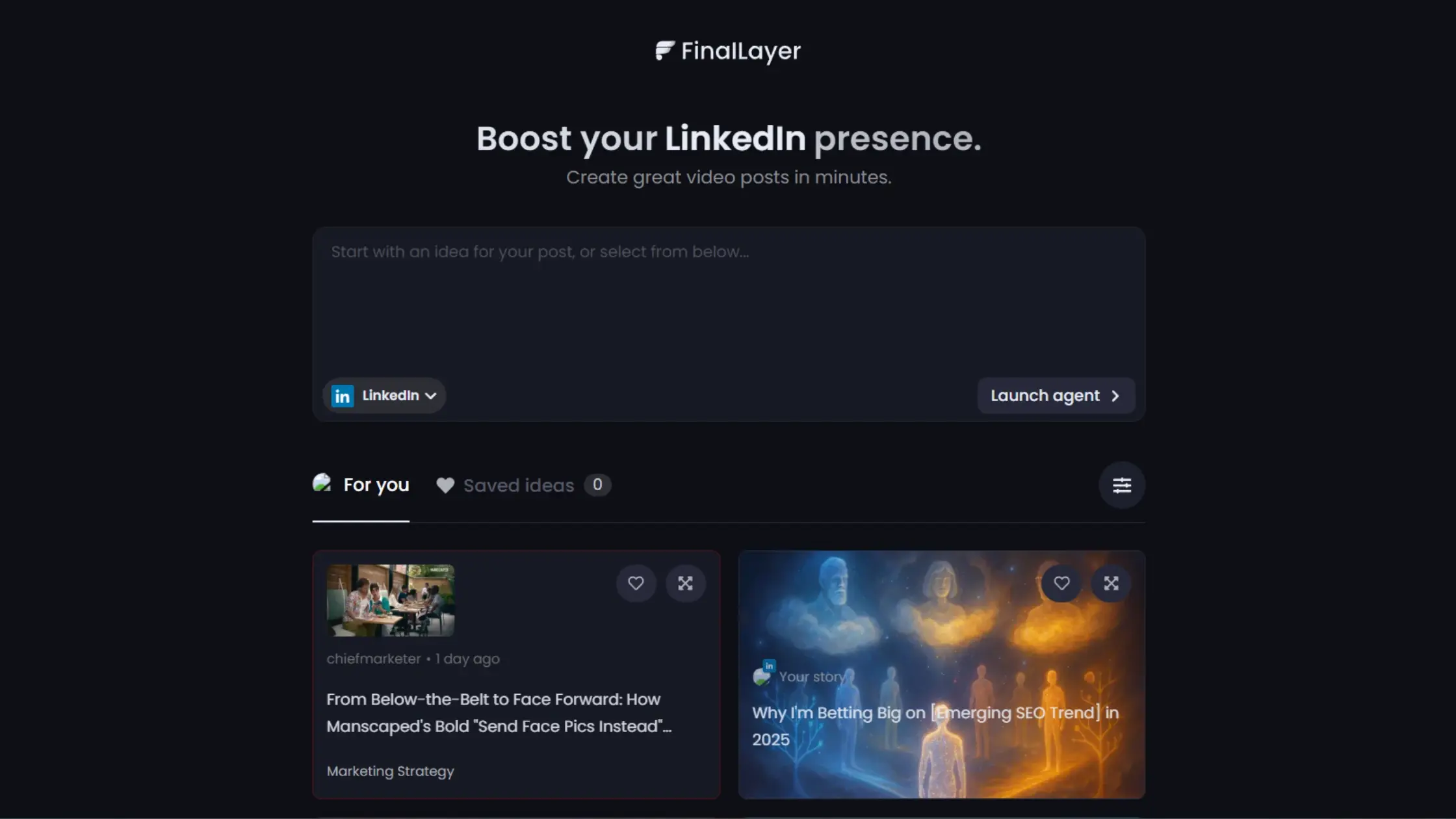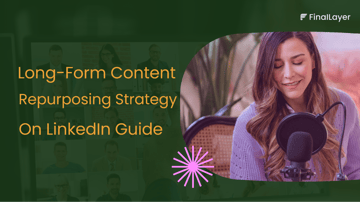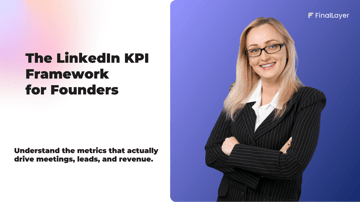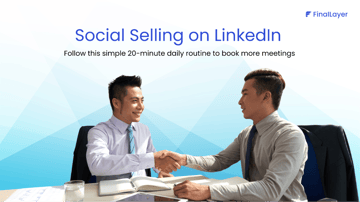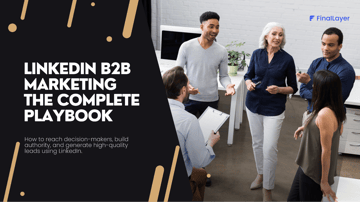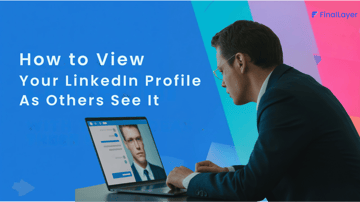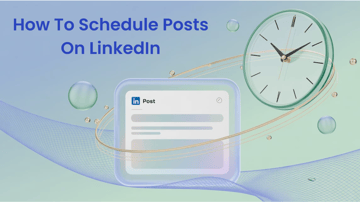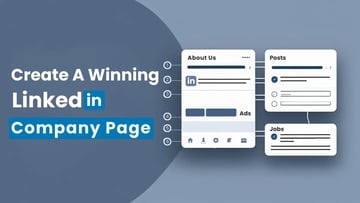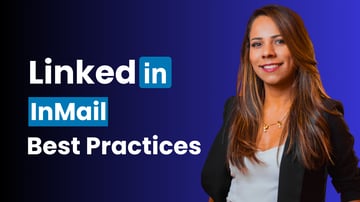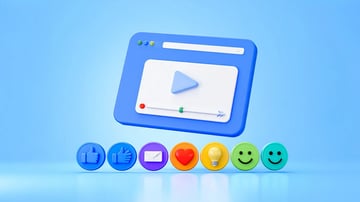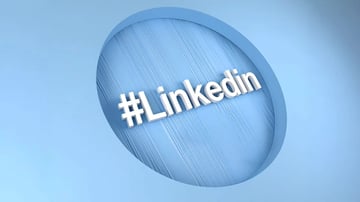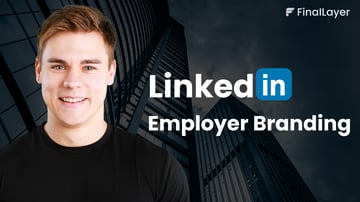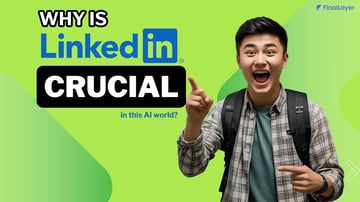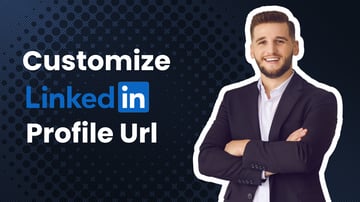In the previous blog, you learned the fundamentals of building a powerful personal brand on LinkedIn, from optimizing your profile and crafting compelling content to establishing yourself as a thought leader in your industry. We covered the essential concepts of personal brand development, audience engagement, and content strategy that form the backbone of your professional presence.
Now that you have a solid personal brand foundation, it's time to unlock its true potential. This comprehensive guide focuses on the next critical step: transforming that carefully built personal brand into tangible revenue streams. You'll discover proven strategies to systematically monetize your expertise, convert your influence into high-value opportunities, and build multiple six-figure income streams—all while maintaining the authentic personal brand you've worked hard to establish.
The groundwork is laid. Now let's turn your personal brand into profit.
Introduction to LinkedIn Personal Brand Monetization
Why LinkedIn is the Ultimate Platform for Professional Brand Building
LinkedIn houses millions professionals worldwide, making it the largest concentration of decision-makers on any single platform. Unlike other social networks where entertainment dominates, LinkedIn users actively seek business solutions and professional development opportunities.
The platform's professional nature creates a unique advantage for personal branding. When someone views your LinkedIn profile, they're already in a business mindset, making them more receptive to professional services and expertise. This psychological positioning significantly increases conversion rates compared to other social platforms.
What makes LinkedIn particularly attractive is the reduced competition. While platforms like Instagram and TikTok are saturated with content creators, LinkedIn remains underutilized by most professionals. This creates a blue ocean opportunity where consistent, valuable content can quickly establish authority and attract high-quality leads.
The Psychology Behind Personal Brand Monetization
Share your insights about the topic by creating a LinkedIn post
What are the 5 personal levers that build powerful LinkedIn brands?
You will have a chance to edit later
Human psychology drives every purchasing decision, and personal brands tap into fundamental psychological principles that corporate brands cannot match. Trust develops faster with individuals because we naturally relate to personal stories and experiences.
Authority plays a crucial role in monetization. When you consistently share valuable insights and demonstrate expertise, prospects begin viewing you as the go-to expert in your field. This perceived authority commands premium pricing and reduces sales resistance.
The authenticity factor cannot be overstated. Personal brands can share failures, lessons learned, and behind-the-scenes insights that create emotional connections. These connections translate into loyal clients who become advocates for your services.
Foundation: Building Your LinkedIn Personal Brand
Strategic Profile Optimization for Maximum Impact
Your LinkedIn profile serves as your digital business card, but it needs to function more like a sales page than a resume. The headline should immediately communicate your value proposition rather than just listing your job title.
For example, instead of "Marketing Manager at ABC Company," try "Helping B2B SaaS Companies Generate 300% More Qualified Leads Through Strategic Content Marketing." This approach immediately tells visitors what problem you solve and for whom.
Your summary section should tell a compelling story that connects your background to your current expertise. Share specific achievements, client transformations, and unique methodologies. Include keywords naturally to improve discoverability, but prioritize readability and engagement.
Visual elements matter significantly on LinkedIn. Professional headshots increase profile views by 21 times, while custom background images can reinforce your brand message. Ensure consistency across all visual elements to create a cohesive professional image.
Defining Your Unique Value Proposition and Niche
Successful personal brands focus on specific niches rather than trying to serve everyone. Specialization allows you to charge premium rates while becoming the obvious choice for your target market.
Start by identifying the intersection of your expertise, market demand, and personal passion. For instance, if you're a project manager with healthcare experience, you might specialize in helping healthcare organizations implement digital transformation projects.
Your unique value proposition should answer three questions: What do you do? Who do you serve? What makes you different? Craft this into a clear, memorable statement that guides all your content and conversations.
Market research helps validate your niche choice. Look for active discussions in LinkedIn groups, analyze competitor content performance, and survey your network about their biggest challenges in your area of expertise.
Content Strategy for Authority Building
Content creation on LinkedIn requires a strategic approach that balances value delivery with authority building. Develop content pillars that align with your expertise while addressing your audience's pain points.
Educational content performs exceptionally well on LinkedIn. Share industry insights, explain complex concepts in simple terms, and provide actionable tips that readers can implement immediately. This positions you as a trusted resource.
Personal stories create emotional connections while demonstrating expertise. Share lessons learned from failures, client success stories, and behind-the-scenes insights from your professional journey. These stories make you relatable while showcasing your capabilities.
Consistency trumps perfection on LinkedIn. Posting valuable content regularly, even if imperfect, builds momentum and keeps you visible to your network. Aim for quality content on a sustainable schedule rather than sporadic brilliant posts.
Revenue Stream Development and Diversification
Understanding Different Revenue Models for Personal Brands
Successful personal brands typically generate revenue through multiple streams rather than relying on a single source. This diversification provides stability and maximizes earning potential from your expertise.
Service-based revenue often provides the foundation for personal brand monetization. This includes consulting, coaching, done-for-you services, and retainer arrangements. These models leverage your time directly but can command premium rates.
Product-based revenue creates scalability by packaging your expertise into digital courses, templates, tools, or physical products. While requiring upfront investment, these products can generate passive income over time.
High-Ticket Service Offerings
High-ticket services represent the fastest path to significant revenue growth for personal brands. These offerings typically range from $5,000 to $50,000 or more, focusing on transformational outcomes rather than hourly work.
Strategic consulting commands premium rates because it addresses complex business challenges that impact significant revenue or cost savings. Position yourself as a strategic partner rather than a tactical executor.
VIP intensives provide concentrated value delivery over short timeframes. For example, a marketing strategist might offer a three-day intensive to develop a complete go-to-market strategy for a new product launch.
Retainer arrangements provide predictable monthly revenue while deepening client relationships. Structure retainers around outcomes and ongoing support rather than just hours of work.
Digital Product Creation and Course Development
Digital products scale your impact beyond your available time while creating passive income streams. The key to successful digital products lies in solving specific, urgent problems for your target audience.
Course creation requires careful planning and execution to ensure student success and positive reviews. Start by validating demand through pre-sales or beta programs before investing significant time in production.
Pricing digital products requires balancing accessibility with perceived value. Higher-priced courses typically include more personal interaction, implementation support, and community access.
Strategic Networking and Relationship Building
LinkedIn Networking Strategies That Convert
Effective LinkedIn networking goes beyond collecting connections. Focus on building meaningful relationships with people who can benefit from your expertise or refer qualified prospects.
Personalized connection requests significantly increase acceptance rates. Reference mutual connections, shared interests, or specific content they've shared. Avoid generic messages that feel like spam.
Engagement on others' content builds relationships organically. Leave thoughtful comments that add value to the conversation rather than generic praise. This positions you as a knowledgeable contributor while increasing visibility.
LinkedIn groups provide opportunities to demonstrate expertise while connecting with like-minded professionals. Share valuable insights in group discussions and offer helpful resources without being overly promotional.
Building Strategic Partnerships for Growth
Strategic partnerships can exponentially expand your reach and revenue without proportional increases in marketing spend. Look for professionals who serve your target market with complementary but non-competing services.
Joint ventures create win-win scenarios where both parties benefit from shared resources and audiences. For example, a business strategist might partner with a marketing specialist to offer comprehensive business growth packages.
Referral partnerships provide ongoing revenue opportunities through mutual client referrals. Structure these arrangements with clear terms and tracking systems to ensure fair compensation.
Collaboration Opportunities and Network Expansion
Speaking engagements position you as an industry authority while expanding your network and generating leads. Start with local business groups and industry meetups before pursuing larger conference opportunities.
Podcast appearances provide extended exposure to targeted audiences. Research shows that podcast listeners are highly engaged and more likely to take action on recommendations from trusted hosts.
Cross-industry networking exposes you to diverse perspectives and opportunities. Attend events outside your immediate industry to discover new applications for your expertise and potential collaboration partners.
Monetization Strategies and Implementation
Lead Generation Through Personal Branding
Personal brands generate leads through attraction rather than interruption marketing. When you consistently provide value, prospects seek you out rather than avoiding your outreach.
Content marketing serves as the foundation for inbound lead generation. Educational blog posts, LinkedIn articles, and video content demonstrate expertise while addressing prospect pain points.
Lead scoring helps prioritize follow-up efforts on the most qualified prospects. Track engagement levels, content consumption patterns, and interaction quality to identify serious buyers.
Nurture sequences move prospects through your sales funnel by delivering increasingly specific value. Start with general industry insights and progress toward detailed solutions for their specific challenges.
Pricing Strategies for Premium Services
Value-based pricing focuses on outcomes rather than inputs, allowing you to charge premium rates for transformational services. Calculate the financial impact of solving your client's problem to justify higher fees.
Opportunity cost analysis helps prospects understand the real cost of inaction. If delaying your service costs them $100,000 in lost revenue, your $25,000 fee becomes an obvious investment.
Competitive pricing research ensures your rates align with market expectations while reflecting your unique value proposition. Position yourself relative to alternatives rather than racing to the bottom on price.
Sales Process Optimization
Streamlined sales processes reduce friction while maximizing conversion rates. Map out every touchpoint from initial awareness through contract signing to identify improvement opportunities.
Discovery calls serve as mutual evaluation sessions rather than sales pitches. Ask thoughtful questions to understand prospect challenges while demonstrating your expertise through insightful observations.
Proposal presentations should focus on outcomes rather than deliverables. Paint a picture of their improved future state while outlining the specific steps required to achieve those results.
Objection handling becomes easier when you've thoroughly qualified prospects and clearly communicated value. Address common concerns proactively in your marketing materials and sales conversations.
Scaling Your LinkedIn Personal Brand
Content Creation and Distribution Systems
Systematic content creation enables consistent output without overwhelming your schedule. Batch similar tasks together and create templates for recurring content types.
Repurposing strategies maximize the value of each piece of content. Transform a single client case study into a LinkedIn post, Twitter thread, newsletter feature, and podcast episode.
Team building becomes necessary as your personal brand grows. Hire virtual assistants, content creators, or community managers to handle routine tasks while you focus on high-value activities.
Content calendar planning ensures consistent posting while aligning with business objectives. Plan content themes around product launches, speaking engagements, or seasonal industry trends.
Building a Personal Brand Ecosystem
Never run out of content ideas again. The FinalLayer Topics Agent brings hourly post suggestions based on news, social trending topics, your personal experiences, and past posts. Try FinalLayer today.
Email lists provide owned media that platforms cannot take away. LinkedIn serves as the top of your funnel, driving subscribers to your newsletter where you can nurture relationships more intimately.
Website optimization supports your LinkedIn efforts by providing detailed information about your services. Include client testimonials, case studies, and clear calls-to-action that convert visitors into leads.
Cross-platform promotion amplifies your LinkedIn content while reaching different audience segments. Share LinkedIn posts on other social platforms while adapting the message for each platform's unique culture.
Authority building through various media formats reinforces your expertise across multiple touchpoints. Consider writing a book, starting a podcast, or contributing to industry publications.
Advanced Monetization Techniques
Affiliate marketing allows you to earn commissions by recommending products you genuinely use and believe in. Focus on tools and services that align with your expertise and provide real value to your audience.
Licensing your intellectual property creates passive income while expanding your impact. Develop frameworks, methodologies, or assessment tools that other professionals can license and implement.
Board positions and advisory roles provide prestigious opportunities while generating steady income. Your LinkedIn presence and personal brand make you more attractive for these high-level positions.
Investment opportunities often arise from your network and expertise. Angel investing, strategic partnerships, or equity positions in client companies can create significant long-term wealth.
Technology and Tools for Brand Growth
LinkedIn Analytics and Performance Tracking
LinkedIn analytics provide insights into content performance, audience demographics, and engagement patterns. Use this data to refine your content strategy and posting schedule.
Key performance indicators for personal brands include profile views, connection acceptance rates, content engagement, and lead generation metrics. Track these consistently to measure progress.
Third-party analytics tools offer deeper insights than native platform analytics. Tools like Shield Analytics or LinkedIn Helper provide detailed performance tracking and competitor analysis.
ROI measurement helps justify time and resource investments in personal branding. Track leads generated, conversion rates, and revenue attributed to LinkedIn activities.
Emerging Technologies and Future Trends
Artificial intelligence increasingly supports personal branding through content creation, audience analysis, and engagement optimization. Stay current with AI tools that can enhance your efficiency without replacing authenticity.
Video content continues growing in importance on LinkedIn. Live streaming, video posts, and LinkedIn Stories provide new ways to connect with your audience and demonstrate expertise.
Integration between platforms creates seamless experiences for your audience. Focus on tools and strategies that work across multiple platforms while maintaining consistent messaging.
Common Challenges and Solutions
Overcoming Imposter Syndrome and Building Confidence
Imposter syndrome affects most professionals building personal brands. Remember that expertise is relative – you don't need to know everything to help people who know less than you.
Confidence builds through consistent action and accumulated evidence of your capabilities. Document your successes, client testimonials, and positive feedback to reference during moments of doubt.
Authenticity trumps perfection in personal branding. Share your learning journey, admit mistakes, and show vulnerability. This approach builds trust while reducing pressure to appear flawless.
Continuous learning keeps you ahead of your audience while providing new content ideas. Invest in courses, attend conferences, and engage with other experts in your field.
Time Management and Consistency Challenges
Time management becomes critical as your personal brand grows. Prioritize activities that directly contribute to revenue generation or relationship building over vanity metrics.
Batch processing similar tasks improves efficiency. Dedicate specific times for content creation, client work, networking, and business development activities.
Delegation becomes necessary for sustainable growth. Start with administrative tasks and gradually delegate content creation, social media management, and other routine activities.
Systems and processes reduce decision fatigue while ensuring consistency. Create templates, checklists, and standard operating procedures for recurring activities.
Market Saturation and Differentiation
Market saturation in popular niches requires creative differentiation strategies. Focus on unique combinations of expertise, specific industry verticals, or innovative service delivery methods.
Blue ocean strategy involves creating new market categories rather than competing in existing ones. Look for underserved segments or emerging needs that align with your capabilities.
Innovation in service delivery can differentiate you from competitors offering similar outcomes. Consider virtual reality training, AI-powered assessments, or other technology-enhanced solutions.
Competitive analysis helps identify positioning opportunities while avoiding oversaturated markets. Study successful competitors to understand their strategies while identifying gaps you can fill.
Success Metrics and Optimization
Defining Success Metrics for Personal Brand Growth
Revenue metrics provide the ultimate measure of personal brand success. Track total revenue, average deal size, customer lifetime value, and revenue per client to understand your business growth.
Audience quality matters more than quantity for personal brands. Track engagement rates, lead conversion percentages, and the percentage of your audience that fits your ideal client profile.
Brand recognition indicators include speaking invitations, media mentions, industry award nominations, and unsolicited collaboration requests. These suggest growing authority and market position.
Relationship metrics measure the strength of your professional network. Track connection acceptance rates, response rates to outreach, and referral frequency from your network.
Continuous Improvement and Adaptation
Regular strategy reviews ensure your personal branding efforts align with evolving goals and market conditions. Schedule quarterly reviews to assess performance and adjust tactics.
Market research keeps you informed about industry trends, competitor activities, and emerging opportunities. Subscribe to industry publications and participate in professional associations.
Feedback collection from clients, prospects, and network connections provides insights for improvement. Implement regular surveys and maintain open communication channels.
A/B testing different approaches helps optimize your messaging, content formats, and outreach strategies. Test one variable at a time to isolate effective changes.
Long-term Sustainability and Legacy Building
Brand evolution strategies help you adapt to changing markets while maintaining core positioning. Plan for natural progression in your expertise and service offerings over time.
Succession planning ensures your personal brand can continue generating value even if you step back from day-to-day operations. Consider licensing, franchising, or team-based delivery models.
Industry impact and thought leadership create lasting legacies beyond immediate revenue generation. Focus on contributing to industry advancement and mentoring the next generation.
Relationship building investments pay dividends over decades. Maintain connections with past clients, colleagues, and industry peers who can provide opportunities throughout your career.
Conclusion and Action Steps
LinkedIn personal brand monetization represents one of the most accessible paths to building a profitable professional services business. The platform's creates unprecedented opportunities for those willing to invest consistently in their personal brand. Success requires a systematic approach that balances authenticity with strategic positioning. Your personal brand should reflect your genuine expertise and personality while addressing specific market needs. So, Focus on building genuine relationships and delivering exceptional value, and monetization will follow naturally.

